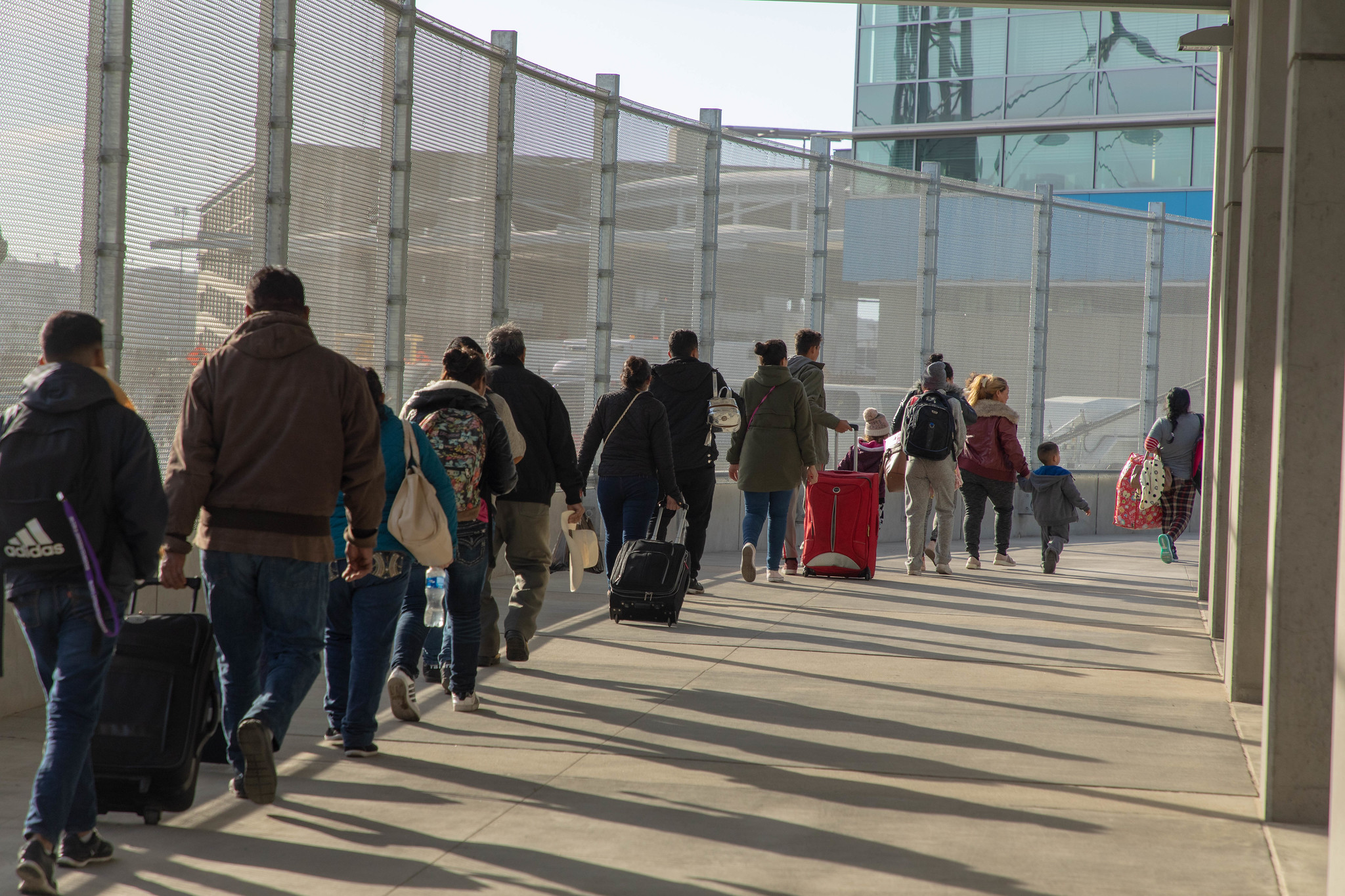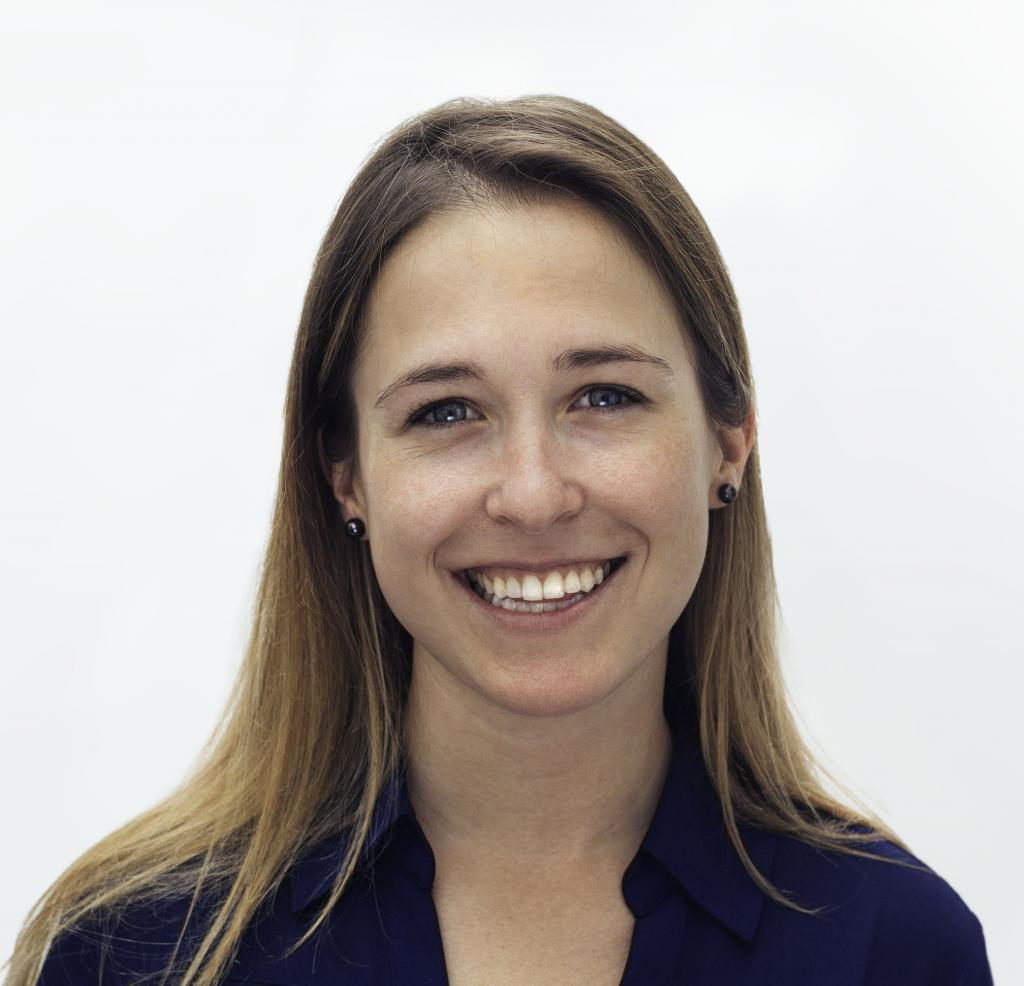What ‘Metering’ Really Looks Like in South Texas
Thirty-two Cubans line the international bridge connecting Roma, Texas, with Ciudad Miguel Alemán, Tamaulipas. The Cubans sit one after another on the Mexican side of the bridge, checking their phones, chatting amongst themselves, and switching positions to stay out of the sun, where the temperature tops 100 degrees. Yet, above all, they are waiting. As the days pass, they wait for their number to be called and for the opportunity to step beyond the midpoint barrier into U.S. territory and ask for asylum.

Thirty-two Cubans line the international bridge connecting Roma, Texas, with Ciudad Miguel Alemán, Tamaulipas. The Cubans sit one after another on the Mexican side of the bridge, checking their phones, chatting amongst themselves, and switching positions to stay out of the sun, where the temperature tops 100 degrees. Yet, above all, they are waiting. As the days pass, they wait for their number to be called and for the opportunity to step beyond the midpoint barrier into U.S. territory and ask for asylum.
These Cubans are among an estimated 18,000 people waiting along the U.S.-Mexico border due to the U.S. Customs and Border Protection (CBP) “metering” policy. I met them and others during a trip two and a half weeks ago to five Mexican border cities—Matamoros, Nuevo Progreso, Reynosa, Ciudad Miguel Alemán, and Nuevo Laredo—to document metering dynamics in these cities and the asylum seekers’ living conditions. I found that the process is varied and nontransparent, and many asylum seekers are waiting in crowded, unsanitary conditions.
The current practice of metering began under the Obama administration, when thousands of Haitians arrived in Tijuana, Mexicali and Nogales, but it became institutionalized during the summer of 2018. At this time, CBP began to station officers at the dividing line between the United States and Mexico and tasked them with stopping asylum seekers from stepping into U.S. territory. Instead, these CBP officers tell asylum seekers that the U.S. government does not have sufficient processing capacity at the ports of entry and that asylum seekers will have to wait in Mexico. Simultaneously, CBP officers accept a set number of asylum seekers each day (recently ranging from zero to about 40 at each port of entry), at times coordinating directly with Mexican officials.
As the backlog of asylum seekers in Mexican cities has increased, waitlists have sprung up to keep track of asylum seekers in the order that they arrived at the border. These waitlists are managed by a range of actors, including the asylum seekers themselves, Mexico’s National Migration Institute (INM), civil society organizations and even the municipal government of Piedras Negras.
The waitlist process also varies by city. For example, asylum seekers in Ciudad Miguel Alemán get on an INM-run waitlist that they can view at any time. Meanwhile, asylum seekers turned back from Texas to Nuevo Laredo are also on INM-run waitlists, but they do not have access to the lists. In Nuevo Progreso, Tamaulipas, a Cuban woman—who was chosen by the waiting group for her public-speaking abilities and English language skills—keeps the city’s handwritten waitlist tucked inside a plastic folder among her belongings.
At times, it gets even more complicated. In Matamoros, each international port of entry has a separate list. In Reynosa, thousands of people are divided into multiple lists—single men, single women and families—which are run by the local Senda de Vida shelter. Two and a half weeks ago, thousands of asylum seekers crowded into the Reynosa shelter to put their names on updated lists, because the old ones included the names of people who had given up on waiting and paid a smuggler to cross the Rio Grande into the United States.
The wait times for asylum seekers also vary from city to city. The Cubans at the Ciudad Miguel Alemán bridge are likely on the fastest-moving asylum waitlist along the entire border, spending an average of two to three weeks camped out on the bridge before entering the United States. By comparison, in Nuevo Progreso, the Cubans and Venezuelans living on the international bridge reported waiting at least two months for their chance to ask for asylum. Similarly, in Reynosa and Nuevo Laredo, the asylum seekers reaching the top of the list reported waiting for several months.
Yet Ciudad Miguel Alemán isn’t quite the golden crossing point in the age of metering. It faces its own challenges, which are reflected to various degrees across all the border cities. Most notably, the city is at the heart of a turf war between the Gulf Cartel and the Cartel del Noreste (a faction of the now splintered Zetas). On Jan. 7, a battle between the groups left at least 30 dead in the small city of 20,000 people. The security situation is evident at 6 p.m. on a Wednesday evening, when the city’s riverside parks sit completely empty. The only people enjoying the sunny weather are a handful of young men drinking beers below the bridge. According to the asylum seekers, these men also regularly help people cross to the United States on rafts.
Due to the security situation, the asylum seekers in Ciudad Miguel Alemán do not leave the bridge. They rely on strangers to withdraw money for them and purchase their food. They also rely on a church group that occasionally brings them hot meals. Yet the asylum seekers feel safer on the bridge than off it. One waiting asylum seeker noted that an armed man in civilian clothes boarded his bus as he arrived in Ciudad Miguel Alemán and demanded to know his identity, potentially looking to make sure he wasn’t from a rival criminal group. When he explained that he was Cuban and wanted to seek asylum in the United States, the armed man demanded that he go directly to the international bridge.
The security situation is a common topic among asylum seekers waiting in Mexican border cities in Tamaulipas and Coahuila. In Nuevo Progreso, asylum seekers also stay on the bridge, and some rattled off stories of friends and acquaintances who had been kidnapped recently in and around the city by men wearing police uniforms. In Nuevo Laredo, asylum seekers pointed out a spot next to the municipal shelter, where, they said, three people had recently been executed. While in Reynosa, asylum seekers reported renting houses with high fences to try to stay safe and remain incognito.
Yet the problems go beyond safety concerns. The cities’ shelters are full, leaving asylum seekers living with precarious housing and unsanitary conditions.
In Matamoros, Reynosa and Nuevo Laredo, the shelters were at capacity—and there were no migrant shelters at all in Nuevo Progreso and Ciudad Miguel Alemán. Even for those who had a spot inside the shelters, there was an insufficient number of beds for everyone waiting. Tents snaked around the cement buildings in the Reynosa shelter and tarp encampments filled the plaza of the municipal shelter in Nuevo Laredo. These tents bake under the sun and flood when it rains, so the most at-risk groups are often given priority for space inside. Yet there is no longer enough space to go around. Families live in tents both inside shelters and outside around the Gateway International Bridge in Matamoros.
The numbers of waiting asylum seekers have also created unsanitary conditions. In Matamoros, the asylum seekers waiting at the Gateway bridge have two options for going to the bathroom: pay four pesos to use the bathroom on the international bridge, or walk toward the river and relieve oneself outside among the trees. When people choose the latter option, the rain washes the human waste into the Rio Grande—the same place that some of these individuals also bathe. In Reynosa, the migrants staying at the Senda de Vida shelter wait in line to use bathrooms shared by hundreds of people. While in Nuevo Progreso, the asylum seekers share one bathroom with all the passing tourists. As of two weeks ago, the bathroom did not have running water and asylum seekers dragged in buckets of water to flush the toilet.
With the Department of Homeland Security promising to expand the Migrant Protection Protocols program along this section of the border, these conditions are poised to get worse. Under this program, known colloquially as Remain in Mexico, asylum seekers in these border cities—both those who went through metering and crossed at ports of entry and asylum seekers who crossed between ports of entry—will be sent back to Mexico for the duration of their U.S. asylum cases. So far, more than 18,000 people have been sent back through the MPP program, mostly in Tijuana, Mexicali and Ciudad Juárez. Nuevo Laredo received the first returnees through the program this past week as part of the borderwide rollout.
These asylum seekers could also face a much harder path to asylum under the Trump administration’s new asylum rule, which promises to deny asylum to anyone who transits through another country en route to the United States. This means that Salvadorans and Hondurans would need to apply for asylum in Guatemala and Guatemalans would need to apply for asylum in Mexico. Cubans and Venezuelans who manage to take rafts or fly directly to Mexico would also need to apply there. The new rule would transform asylum waitlists—since almost all waiting asylum seekers would need to apply in Mexico (except Mexicans or those who fit the outlined exceptions)—but it is likely to face immediate legal challenges.
So far, despite the conditions and uncertainty, thousands of people have kept waiting. It’s the price that has to be paid for a chance at asylum and a life in the United States. During a recent storm, the asylum seekers on the bridge in Nuevo Progreso took shelter in the public bathroom for the night. Crammed inside, one woman took out her phone to capture the moment. As lightning illuminated the scene, the woman flipped the camera to her face with a message for anyone watching: “Look at what freedom costs.”


.jpg?sfvrsn=7d1dc82a_5)
.jpg?sfvrsn=5f75ae1f_5)
